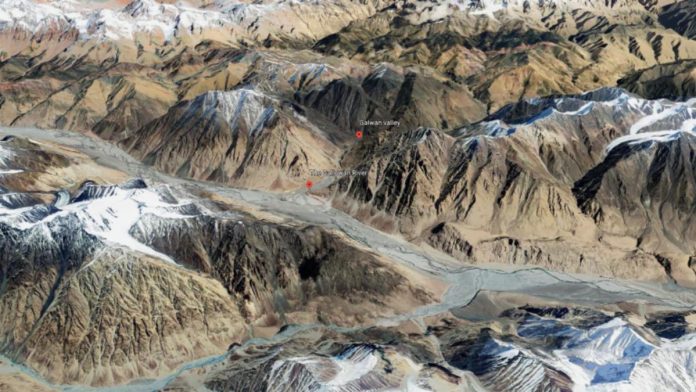The Galwan Valley clash in June 2020 between Indian and Chinese troops sent shockwaves through the international community, highlighting the simmering tensions along the disputed Indo-China border. While both nations acknowledged casualties, China has kept the extent of its losses shrouded in secrecy. This incident brought global attention to the volatility of the region and revealed a narrative of concealed Chinese casualties and strategic missteps. Delving deeper into the clash exposes China’s lack of transparency and potential strategic errors, profoundly affecting Sino-Indian relations and regional geopolitics. The event underscores the fragility of the border situation and the broader implications for future conflicts and stability in the region.
An Australian investigative report by ‘The Klaxon’ unveils a grim incident where 38 PLA soldiers, led by Junior Sergeant Wang Zhuoran, drowned crossing a freezing river in darkness during the Galwan Valley clash. This starkly contradicts China’s acknowledgment of only four deaths, with Wang Zhuoran cited as the sole drowning victim. The revelation exposes China’s concealment of casualties, emphasizing the human cost of the conflict. It underscores the need for transparency in military reporting and amplifies concerns over the true extent of losses suffered by Chinese forces during the Galwan Valley incident, shaping perceptions of the clash and its broader implications.
US Intelligence reports uncover China’s hidden toll of 35 casualties in the June 2020 Galwan clash with India, the first acknowledgment of Chinese losses. This revelation escalates tensions between the two nations, underscoring the severity of the border dispute. The clash prompts intensified diplomatic and military endeavours aimed at de-escalating the volatile situation. Efforts to ease tensions between China and India become imperative in the aftermath of the Galwan clash, highlighting the fragility of the Sino-Indian relationship. As both sides navigate the aftermath of the confrontation, the incident serves as a stark reminder of the potential consequences of unresolved territorial disputes and the necessity of constructive dialogue to prevent further escalation.
Russian News Agency, TASS reported that 45 Chinese soldiers were killed in the June 2020 Galwan clash with Indian forces, doubling the previously disclosed number. This revelation amplifies the scale of the confrontation, indicating higher losses for China than previously acknowledged. The updated casualty figures underscore the severity of the border dispute between China and India, highlighting the challenges in managing territorial tensions. The disclosure adds to the complexity of diplomatic efforts to ease tensions between the two nations in the aftermath of the Galwan clash.
Chinese authorities are accused of suppressing reports of PLA soldier deaths in the Galwan Valley Clash. Evidence and reports suggest that they actively remove mentions of Chinese military casualties. This suppression aims to control the narrative, presenting an image of strength while raising transparency and accountability concerns. The government’s efforts to conceal soldier deaths hint at broader information control strategies and potential implications for public trust.
The disclosure not only highlights the human toll of the Galwan clash but also prompts scrutiny of transparency and accountability in global conflicts. As revelations about China’s concealed casualties’ surface, global attention intensifies, emphasizing the intricacies and repercussions of military confrontations in volatile border areas. This underscores the imperative for transparency and impartial reporting to uphold accountability and prevent misinformation in international affairs, reinforcing the significance of diplomatic efforts to manage tensions and promote peaceful resolutions in contentious regions like the Indo-China border.
China’s reluctance to reveal accurate casualty numbers reflects a wider tactic of hiding the human toll of its military actions. Tight control over information and media by the government exacerbates the opacity, hindering transparency and accountability. By underreporting casualties, China seeks to project an image of strength and evade domestic and international criticism. This strategy aims to maintain public confidence domestically while deterring adversaries abroad. However, it also raises concerns about the lack of transparency in Chinese military operations and the potential for miscalculations or misinterpretations that could exacerbate tensions in the region.
The concealment of casualties in the Galwan Valley clash underscores China’s vulnerability in asymmetric warfare scenarios. It reveals the limitations of China’s military strategy and the human toll of its aggressive territorial expansionism. By underreporting losses, China risks undermining the morale of its troops and eroding public confidence in its leadership.
The hidden losses suffered by China in the Galwan Valley clash underscore a critical need for transparency and accountability in international affairs. China’s attempt to conceal casualties not only highlights flaws in its military strategy but also erodes trust and credibility on a global scale. As the incident prompts a reevaluation of diplomatic approaches towards China, it becomes clear that advocating for transparency and human rights is essential for constructive engagement. The international community must demand accountability from China, ensuring that the true cost of its actions is not obscured. Moving forward, fostering transparency and holding all parties accountable will be paramount in promoting stability and peace in the region.









































